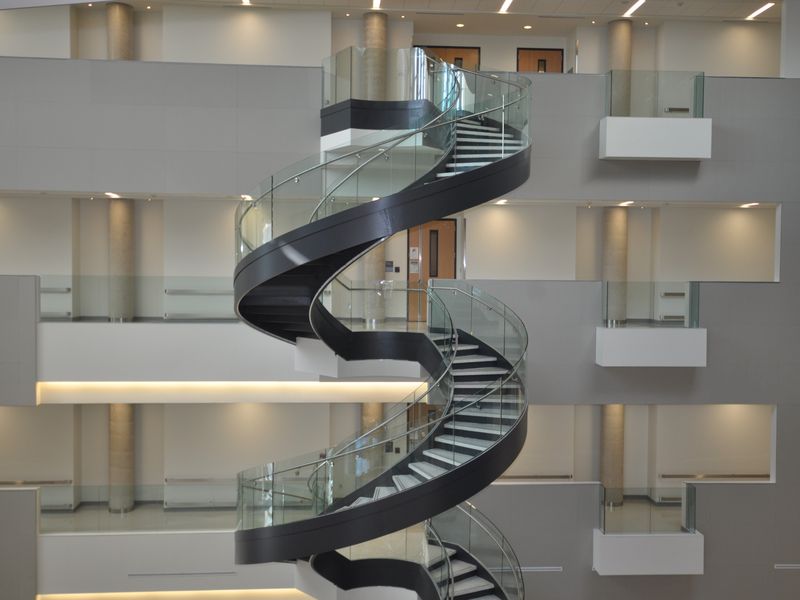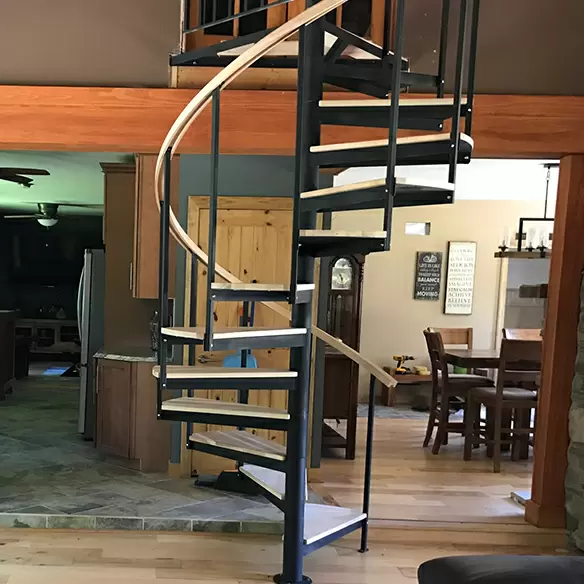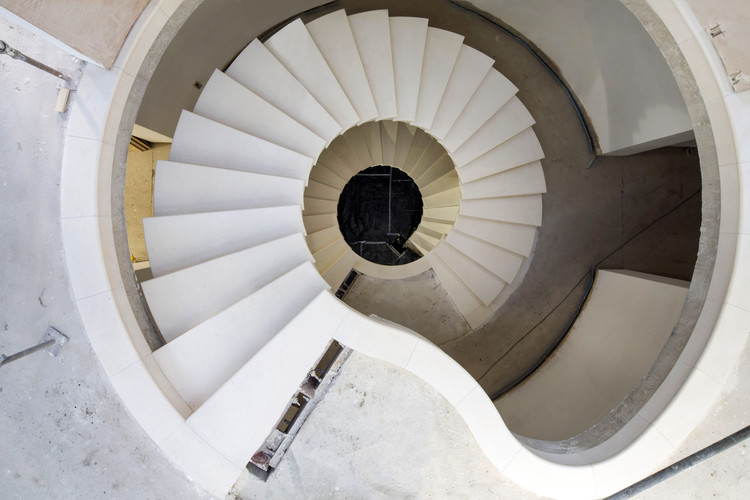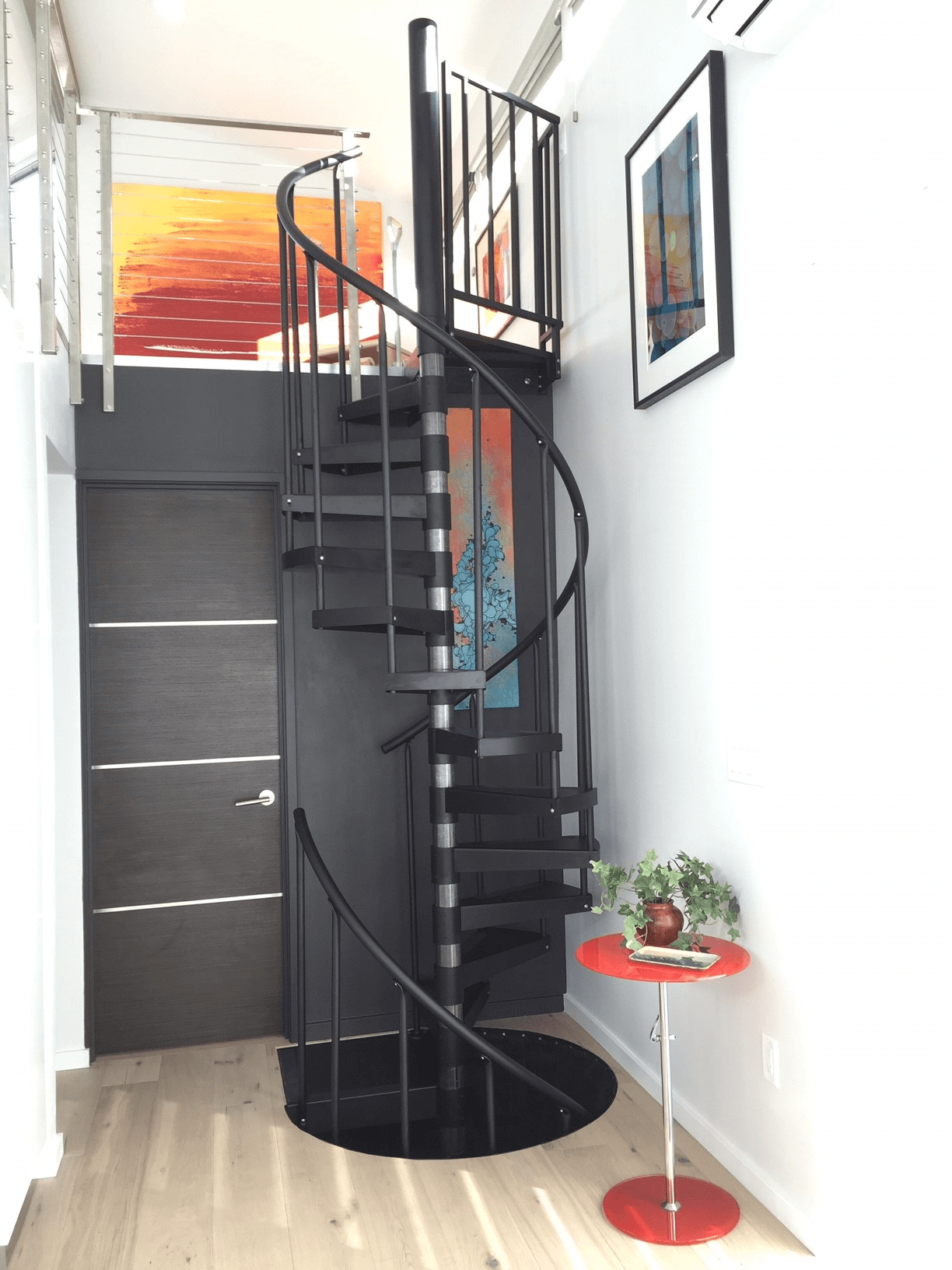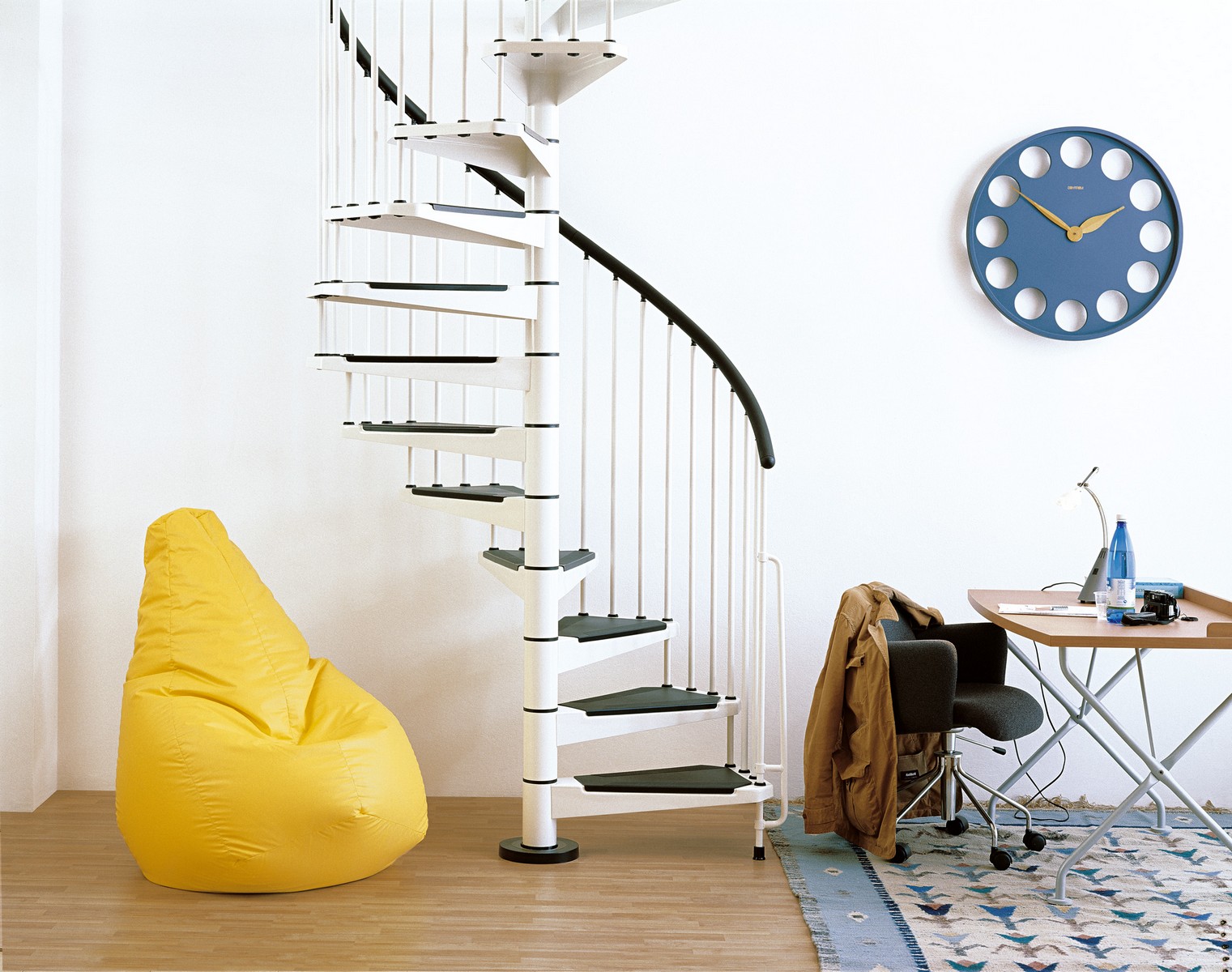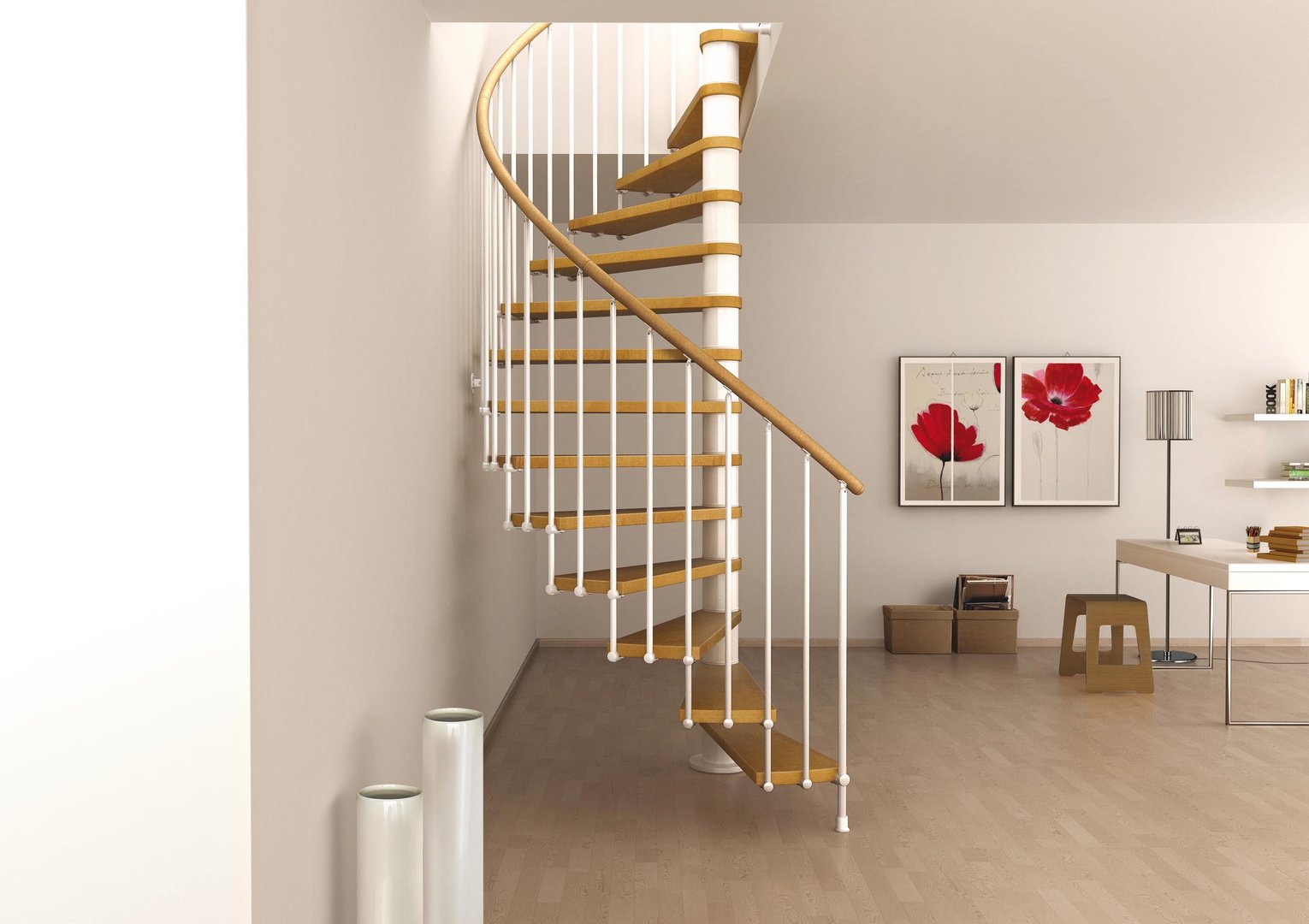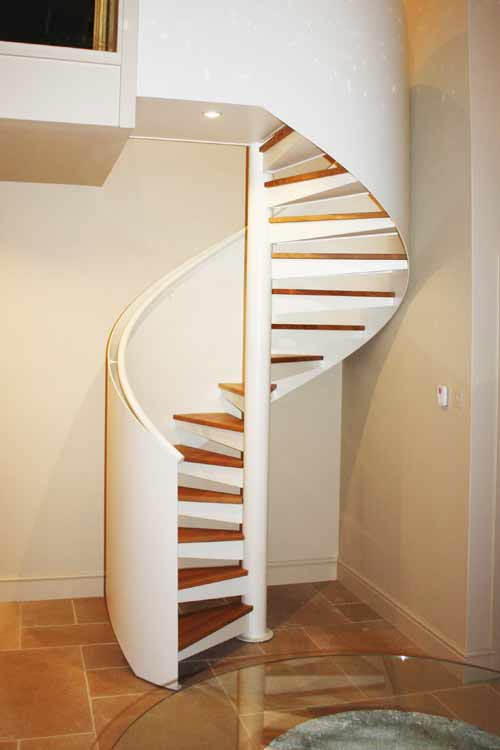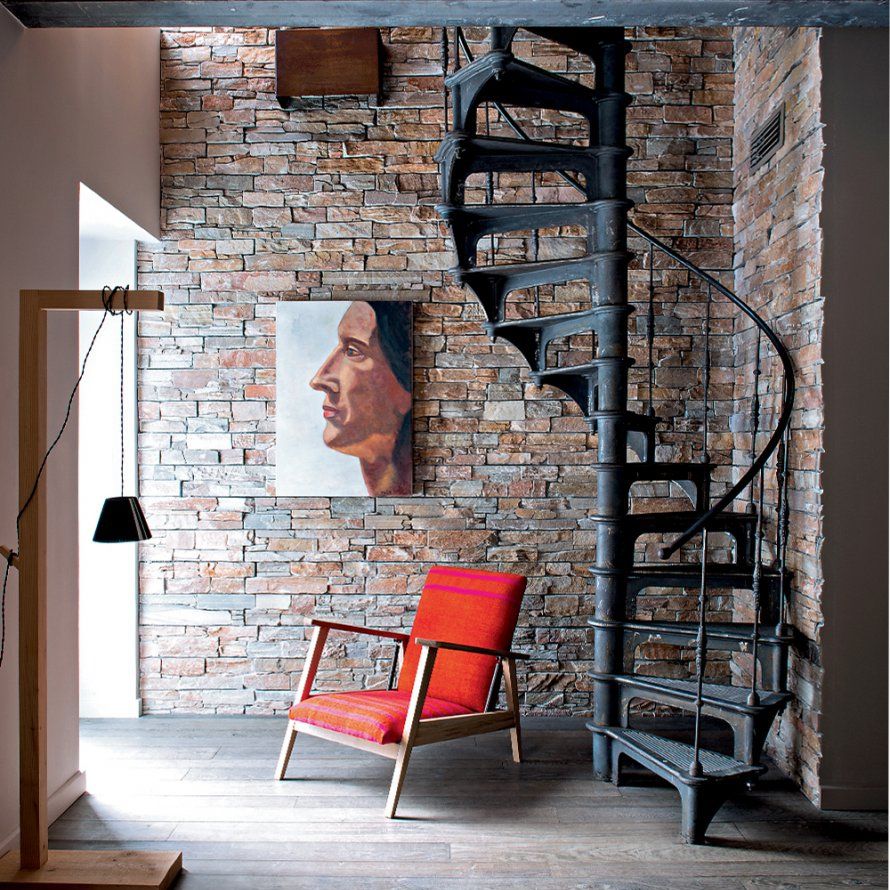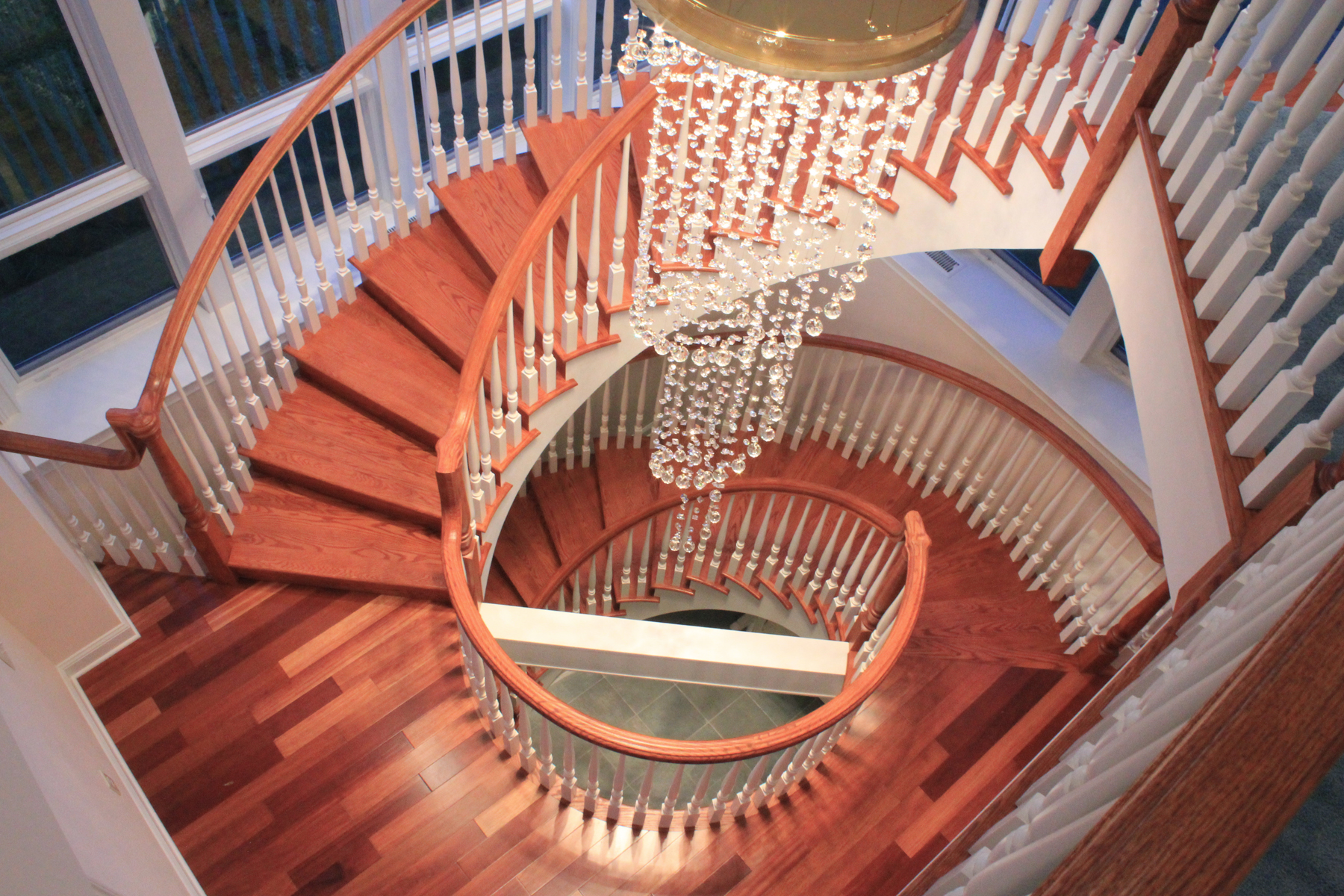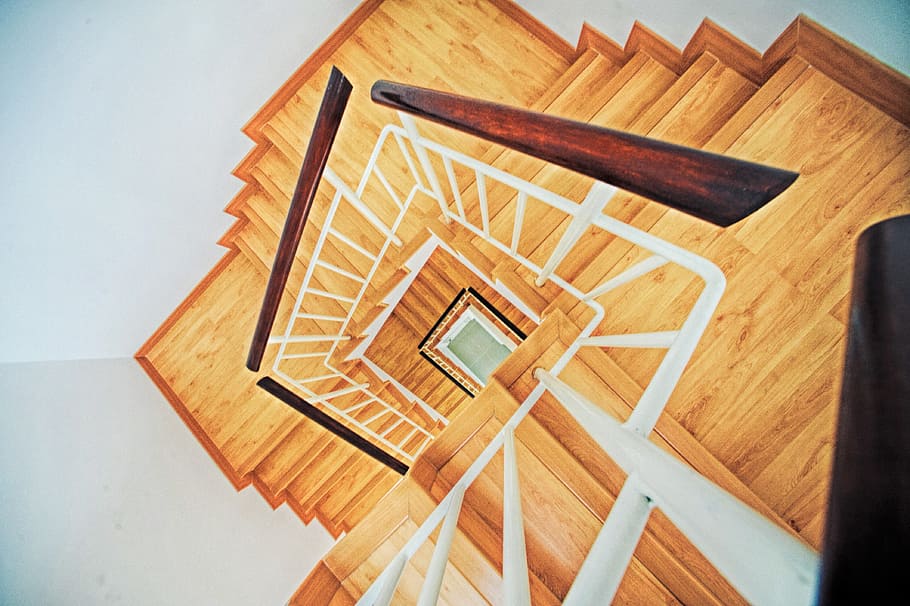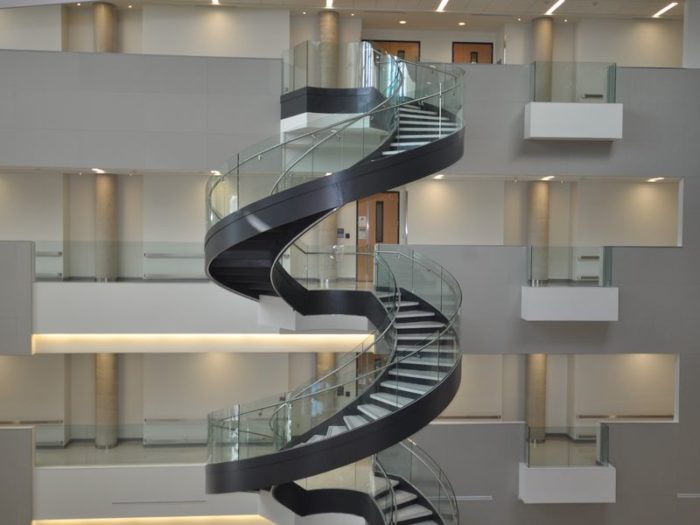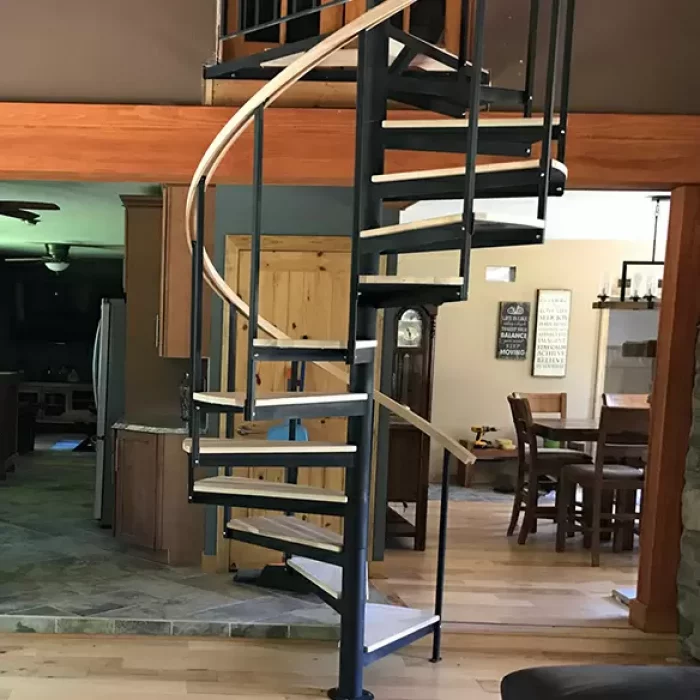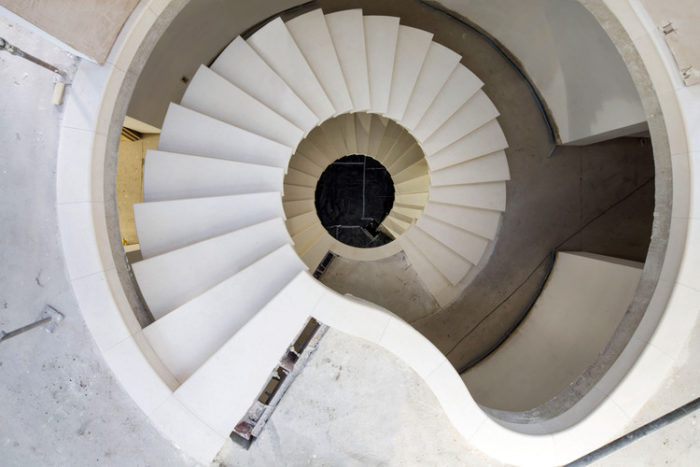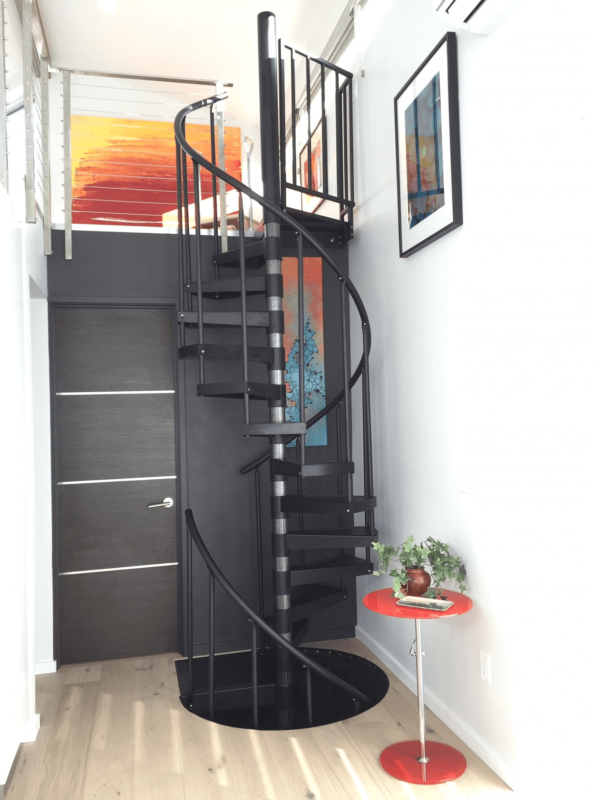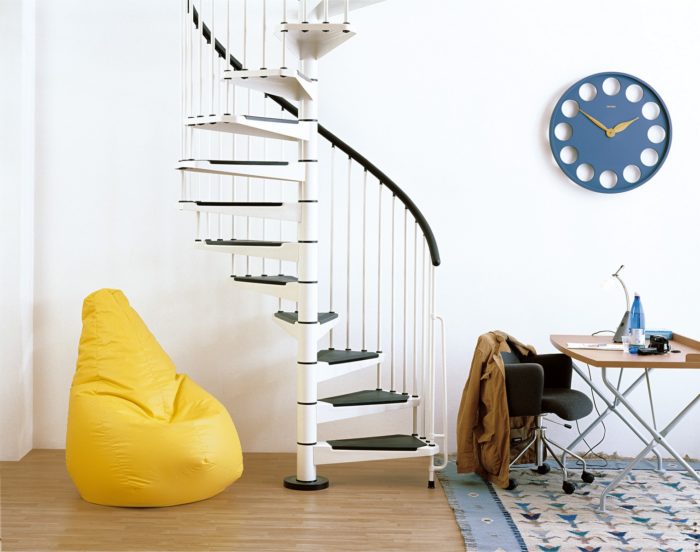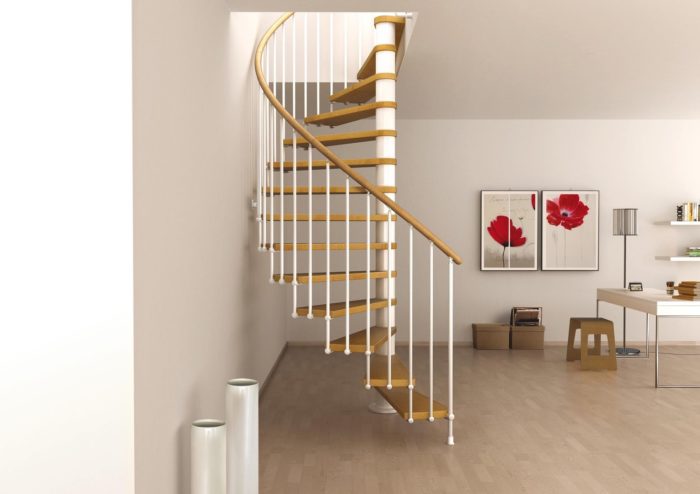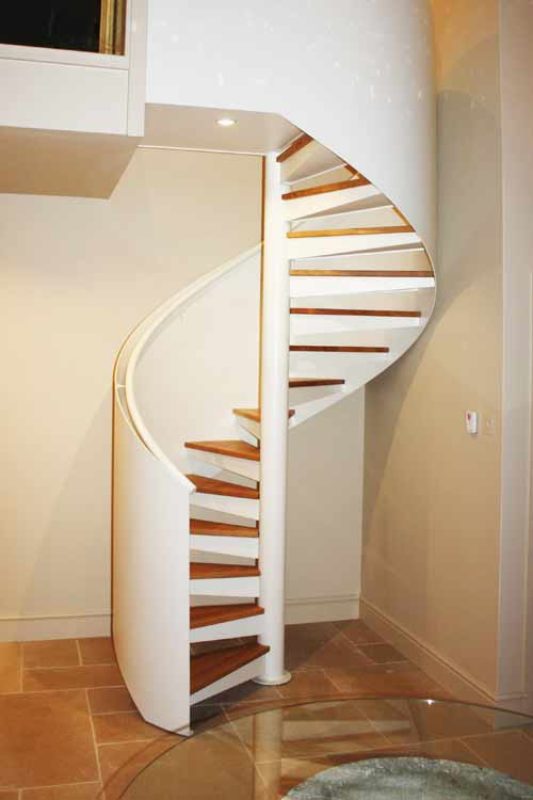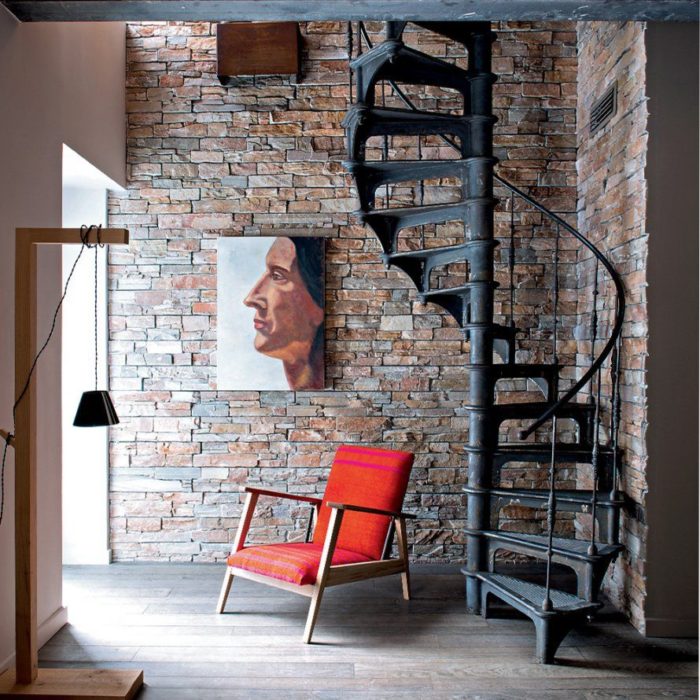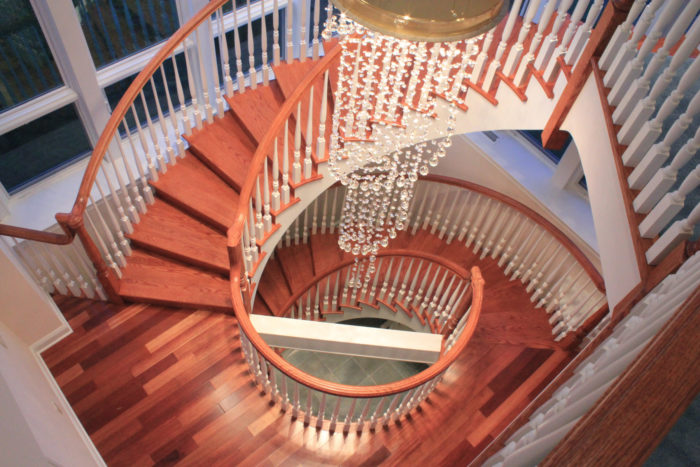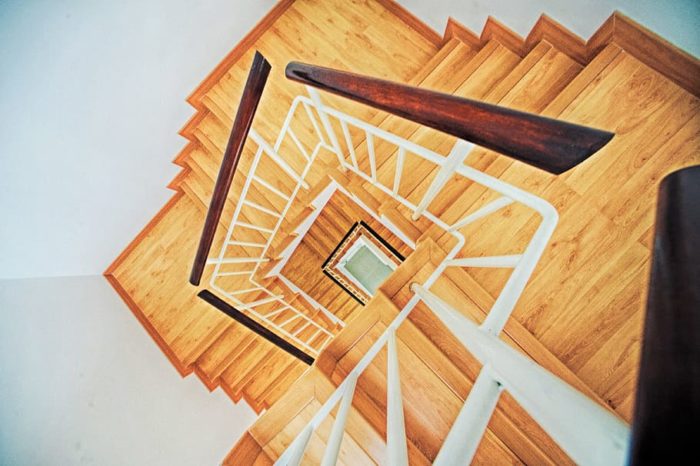Spiral Staircases are used in spaces where you need to introduce a twist (even literally), or the designer wants the staircase to bring a different feel to the room. Also, a staircase railing is the unknown soldier in any stairway, let alone the aesthetic features it can possess to become the focal point of any interior.
Sometimes, a circular staircase is added when there is limited space. Spiral staircases have a sense of appeal to them that draws your attention and makes it almost impossible to look away. The curved stairs are known to bring in the sense of luxury and art. Throughout architectural history, spiral staircases have been used inside places of luxury—mansions, palaces, and churches.
Though they made brief cameos in the 5th Century BC, spiral staircases didn’t get a proper role in architecture until one was used in the Trajan Column in 115 AD. In the modern era, they have slowly become a part of the residential world.
Photographers, movie makers, and Instagram travelers have all been taking advantage of the photogenic side of the circular staircase. The curved stairs create a more romantic atmosphere than the regular ones, and therefore there have been numerous spiral-stair shots in movies with symbolic meanings.
The history of spiral staircases
Spiral staircases have been used for centuries as a way to save space while providing access to different levels of a building. They are a popular architectural feature that has been around for a long time, dating back to ancient times. The oldest known spiral staircase was built in the 5th century BC in Greece and can still be seen today.
Throughout history, spiral staircases have been used in castles, churches, and other important buildings. They were also popular during the Renaissance and often used as decorative elements in palaces and villas. Today, spiral staircases are still used in modern architecture and are often chosen for their unique design and space-saving capabilities.
What is a Spiral Staircase?
A spiral staircase turns around a central axis and rises as it goes around. It is one type of round or circular stair in which the riser is connected to a central column.
What is the difference between the spiral staircase and the helical staircase?
Unlike spiral stairs, helical and curved stairs do not have a central column. Interestingly, the majority of the spiral staircases that are present in homes are helical staircases. For a staircase to be truly spiral, the steps should revolve around a central point, but, on the other hand, helical stairs twist at a certain distance from the main point.
1- Spiral Staircase:
2- Helical staircase:
What are the different types of Spiral Staircases?
Spiral staircases are of two different types: indoor and outdoor. Generally, indoor staircases are made of materials like wood or forged iron, while outdoor ones are made of materials that will bear the wear and tear of the weather, like galvanized steel. Check out the wooden spiral staircase by Tron Meyer.
What factors affect the design?
While it is simple to define a spiral staircase, a few factors must be considered when looking into its design.
- Height: Knowing the finished floor-to-floor size is significant to construct a circular staircase.
- What is the angle of rotation? One needs to see how many degrees must be covered to reach the next floor with the steps around the central axis.
- What is the diameter? How big would each side of the circular staircase be? Is this enough for a person to get through?
- Where is the coiling staircase going to be located?
- Is it going to affect the feel of the space? If so, how? And how will this be reflected in the railings, handrails, and materials used in the rolled staircase?
Why do we use a Spiral Staircase?
1. Space Efficient
A spiral staircase saves many precious square meters. The vertical nature of the stair ensures that its footprint is not massive compared to other staircases. Creating a space-efficient home is the battle of every house owner, and a coiling staircase is handy to that end.
2. Access
Homeowners have a lot of dead space in their houses because they are challenging to get into. While a traditional staircase will not fit into small spaces, propping up a ladder is not a daily solution. However, flexibility is a plus when it comes to installing one.
3. Customization
A coiling staircase can be entirely customized to meet the needs of homeowners and their visions of the space in which the staircase is to be located.
4. Economic
This staircase is the best option for a homeowner as it has a low cost of installation and ownership. However, it adds much more value to any hall or house that contains it.
How much does it cost to install a Spiral Staircase?
Spiral staircases are usually associated with grand and luxurious spaces. As a result, it is believed that spiral staircases are costly to construct, but that is not precisely the case. Many factors affect the pricing of a coiling staircase: materials used, height covered, embellishments included, finishes, etc. Spiral staircases can cost anywhere between $600 and $100,000.
What are the different ways to design a spiral staircase?
1. Open Spiral Staircase
Open spiral staircases have a minimalistic and airy feel. Using them in areas with less space will help make a room look bigger than it is, for spiral staircases are opaque. Also, they present one way to add some exquisite geometry to stark white spaces.
2. Closed Spiral Staircase
Spiral staircases can still be closed off, following traditional designs. However, if the homeowner and designer go for this option, they need to ensure the space does not feel more cramped. Closed spiral staircases can be made to feel more luxurious through rich materials, which should be chosen based on the atmosphere of the surrounding space. Also, greenery can be integrated into their designs to give them an elegant touch.
3. Industrial Spiral Staircase
An industrial-style spiral staircase would be a brilliant addition to a space to give off rustic or industrial vibes. However, designers need to pay attention to the material of the riser to maintain the style.
4. Functional Spiral Staircase
No homeowner would probably introduce a volute staircase to their house without any function, yet it is still worth noting that they can be included for particular purposes. A coiling staircase can be used to connect two levels inside a room. For example, the upper level of a library or a guest room can be combined with its lower level using a rolled staircase.
5. Embellished Spiral Staircase
Embellishments added to and engraved into a rolled staircase become part of its charm. They add to the effect created by the coiling staircase in a room or space. Various embellishments can be added to a rolled staircase, including intricate designs on balustrades, treads, risers, etc.
6. Square Spiral Staircase
As unusual and maybe impossible as it sounds, this rolled staircase is being built in homes. Being more square than circular, it can be used as an alternative to the traditional staircase. It has wider tread than the conventional circular staircase but does not occupy as much space as the other staircases.
What are the main factors needing consideration when creating spiral staircases?
Several factors need to be considered when designing a spiral staircase to ensure its structural integrity, functionality, and aesthetic appeal. These factors include:
- The intended purpose of the staircase.
- The amount of space available for installation,
- Desired size and shape of the staircase, the materials to be used,
- Structural support is required,
- Safety features needed,
- The building codes and regulations must be followed.
- Additionally, the location of the staircase and the level of foot traffic it will experience must also be considered.
All of these factors must be carefully considered to create a safe, functional, and visually pleasing spiral staircase.
The advantages and disadvantages of using spiral staircases in different types of buildings:
- Spiral staircases have certain benefits and drawbacks depending on the building or environment they are used in. They can save space, provide an elegant and unique design feature, and enhance the visual appeal of a structure.
- However, they can also be challenging to navigate for some individuals, particularly those with mobility issues, and may not meet accessibility requirements. Additionally, their curved design can make them difficult to clean and maintain
The decision to use a spiral staircase should be made based on the specific needs and constraints of the building or environment in question and with careful consideration of the potential benefits and drawbacks.
You may also be interested in the following:
